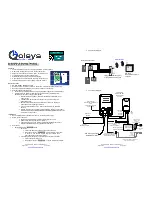
USEFUL INFORMATION
9
RESTING METABOLISM & SKELETAL MUSCLE
Skeletal muscle is muscle that is connected to bone and used to move parts of the body.
The maintenance and increase of this skeletal muscle is closely linked to resting metabolism.
What is resting metabolism?
Regardless of your activity level, a minimum level of energy is required to sustain the body's everyday
functions. Resting metabolism, the amount of calories needed to supply the body with the minimum
level of energy, differs between individuals depending on variables such as age, weight, body
composition, and energy expenditure.
60-70% of daily energy use is for
resting metabolism
The total amount of energy burned by the body in
a typical day is as follows.
The ratio of these is 60%-70% for resting
metabolism, 20%-30% for daily activity, and 10%
for diet induced thermogenesis. This means that
resting metabolism accounts for most of our daily
energy consumption.
If our daily food intake exceeds the amount of
energy required for these activities, the additional
energy is stored as fat.
Food
Daily ac ivity metabolism
Diet-induced thermogenesis
Resting metabolism
Calories
Calories
Resting metabolism
Daily activity metabolism
Diet-induced
thermogenesis
Energy required to
maintain vital functions.
Energy used for daily
activities such as
commuting to work,
household chores,
hobbies, etc.
Energy emitted after
eating a meal.
Let’s look at an example
RESTING METABOLISM
Example of display:
• Resting Metabolism:
1186 kcal
Example of display:
• Skeletal Muscle Percentage:
28.1%
SKELETAL MUSCLE
PERCENTAGE
Содержание HBF-500CAN
Страница 1: ...Body Composition MONITOR with Scale Model HBF 500CAN Instruction Manual ENGLISH...
Страница 43: ...NOTES 43...










































